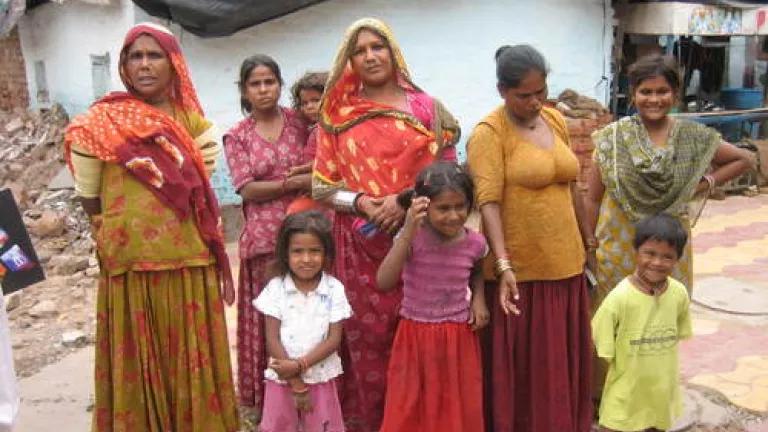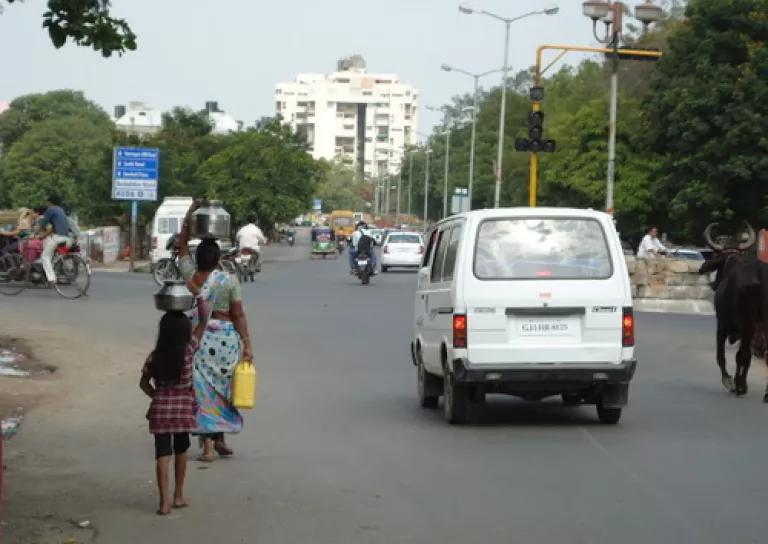
Guest Blog Post by Amee Raval, NRDC India Climate Intern
With 2014 officially being the hottest year on record, the conversation on building resilience in the communities most vulnerable to climate change has become particularly important for governments across the world working to establish mitigation and adaptation policies. Taking this a step further, government parties involved in the recent UN climate talks in Geneva are recognizing and urging that gender equity be integrated into the new global climate agreement. This agenda among UN constituents is reflective of a growing international awareness of the disproportionate impact that climate change has on women.
At the climate talks in Geneva this month, the UN Working group proposed the following language:
"All Parties and stakeholders shall, in all climate change related actions, respect, protect, promote, and fulfill human rights for all. All Parties shall be guided by gender equality and ensure the full and equal participation of women in all climate actions and decision making processes. All Parties should consider in their climate policies and actions a just transition of the workforce that creates decent work and quality jobs."
Addressing gender disparities in climate adaptation efforts is vital to ensure acting on climate change protects those who are most vulnerable to its devastating impacts. Local initiatives such as Ahmedabad's Heat Action Plan - South Asia's first early warning system against extreme heat waves - are incorporating the awareness on how climate change can uniquely impact women.
Ahmedabad community members. © Dr. Gulrez Shah Azhar, IIPH-G
Heat-related challenges faced by women in Ahmedabad
In Ahmedabad, certain groups within the city have been found to be more at-risk to heat-related health impacts, including children, the elderly, slum communities, and outdoor workers. Two of NRDC's issue briefs in its "Rising Temperatures, Deadly Threat" series specifically focus on the vulnerabilities of slum communities and outdoor workers. The analysis shows that women within these groups face unique climate-related challenges in India.
In slum communities, women are responsible for household chores including cooking and preparing meals on open fires indoors, regardless of the weather, which exacerbates exposure to high heat during scorching weather. Access to safe drinking water and facilities such as toilets or fans during the heat season can also be a struggle for women living in slums.
Occupationally, many women who work as manual laborers wear tight t-shirts over their saris (traditional Indian clothing), hindering the cooling effect of sweat evaporation. In some occupations that are primarily carried out by women, such as agarbati- (incense) and kite-makers, women sit for hours in small, unventilated structures without using fans or any cooling measures. In addition to paid work, women's concurrent engagement in household responsibilities e.g., water and firewood collection, further contributes to heat strain and exhaustion.
In combination with these factors, lack of access to education and technology, important tools for heat awareness and protection, limits many women's adaptive capacity to extreme heat. Poor women also lack representation in most formal decision-making structures, meaning that their interests are often not adequately considered.

Women carrying water in Ahmedabad. © Nilesh Vilas Thube, IIPH-G
How Ahmedabad's Heat Action Plan can promote gender equity
Ahmedabad's Heat Action Plan, launched in 2013, provides a framework for building resilience and protecting health within vulnerable communities in India's growing cities. As the third year's Plan, currently under development ahead of the 2015 heat season, government officials and community stakeholders are looking to incorporate health and awareness interventions to specifically address risks to women.
As primary caregivers, women are critical to carrying out the Plan's strategies to reduce the negative health impacts of heat. Responsible for securing their families' resources such as potable water and food and protecting their families' health and well-being, women are strongly engaged in their local community. As a result, women, often thought of as the 'glue' of their communities, are key agents of engagement and change for climate adaptation efforts.
As part of the Heat Action Plan's outreach activities in Ahmedabad this year, the team is considering targeting pamphlets with heat protection tips for women and focusing distribution efforts in places where women often congregate, e.g., markets and watering holes. This targeted dissemination of informational materials can serve dual purposes. First, it can empower women with more knowledge and a greater ability to protect themselves from heat-related illness. It is also an opportunity to extend knowledge to families and communities through women, resulting in broader behavioral changes that can save lives.
Along with targeting women for outreach and education, future research and interventions should also incorporate the concerns and insights of women. Equal participation of women in these processes moving forward is key to protecting those most vulnerable to extreme heat. In Ahmedabad, training workshops with community groups such as the Self-Employed Women's Association (SEWA) can also serve as organized outlets to help inform and get women more actively involved. Together with the Ahmedabad Municipal Corporation and NRDC's local partner, the Indian Institute of Public Health, Gandhinagar, the groundbreaking heat adaptation work underway in Ahmedabad can continue to improve its ability to reach and protect at-risk women as temperatures rise.
As raised during last week's UN negotiations, local actions like this Ahmedabad Heat Action Plan are a part of crafting a climate agenda that truly prioritizes gender equality and climate justice.
